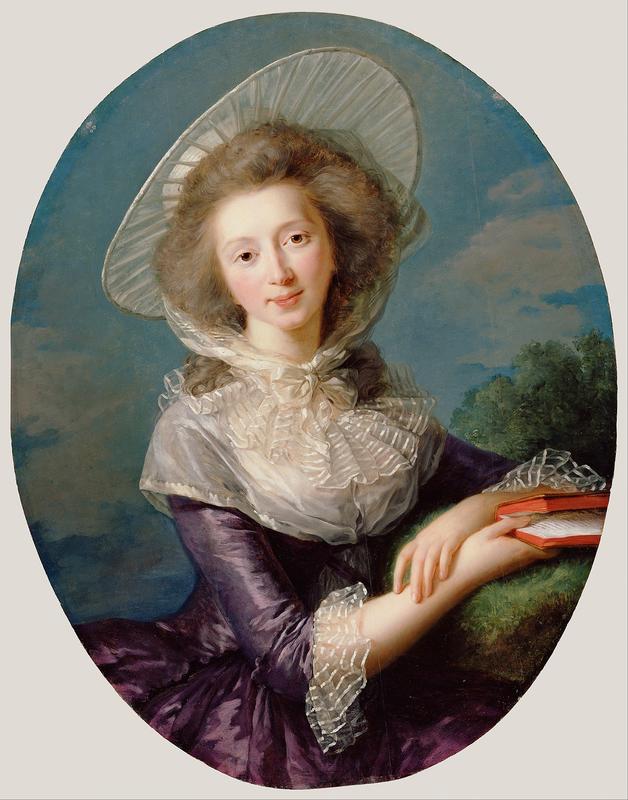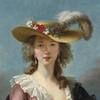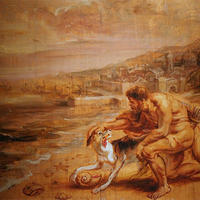More about The Vicomtesse de Vaudreuil

Sr. Contributor
Behind the Vicomtesse de Vaudreuil's demure smile and tea party frills is a feminist commentary.
As a female court painter two centuries before the Gloria Steinem era, Louise Vigee Le Brun had to deal with more than her fair share of sexist assholes. One critic said she was, “Hardly able to paint a male sitter…[she] continued the centuries cult of women.” As if to give the finger to this perception that women, like her paintings, are merely decorative, she paints Madame Vaudreuil holding a book. This gesture, typically used in portraits of men, highlights the Vicomtesse’s intellectualism and the influence of women in the Enlightenment.
Vigee Le Brun extensively studied Rubens for this portrait, following his method of applying very thin glazes on a panel surface to delicately build skin tones. It has been suggested that she chose this technique to give a rich, glowing quality to the Vicomtesse’s complexion, lending beauty to otherwise plain features. Vigee Le Brun was, after all, in the business of flattering rich people.
The sitter, Victoire Pauline Riquet de Caraman, was an aristocrat who improved her status by marrying the Vicomte de Vaudreuil. Her husband was an aide-de-camp in the American Revolution. Unfortunately, the French Revolution destroyed her family’s fortunes in the Caribbean and Victoire was forced into exile. She returned after the fall of Napoleon and ended her days as a lady-in-waiting to Marie Antoinette’s daughter…two aging grand dames of the old regime, left with nothing but their memories.
This painting was in the collection of Baron Edouard de Rothschild until his wife’s death in 1975. Baron Rothschild was a member of the famous Jewish banking family with an equally famous art collection. Rothschild probably never knew how closely his own life mirrored that of the unlucky woman in this picture. Rothschild was forced into exile by the Nazi invasion of France. He hid as much of his art collection as possible on a farm, but the Nazi’s confiscated most. He returned to France after the war. Interestingly, the 1934 Hollywood film House of Rothschild (based on the Baron’s family), was a favorite of Hitler’s. Apparently, Hitler misread this inoffensive costume romance as a propaganda piece illustrating the Jewish rise to dominance over international finance…just the sort of delusional thinking we’d expect from an animal rights activist who murdered 11 million people.














